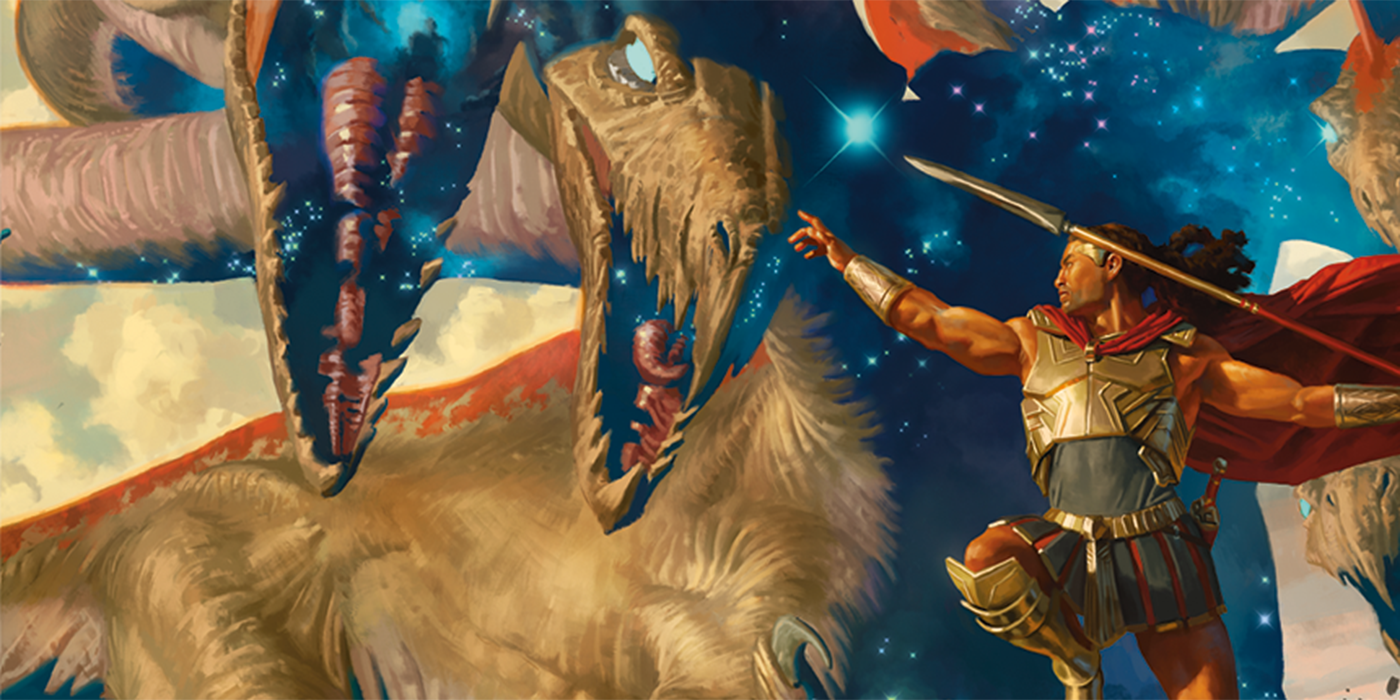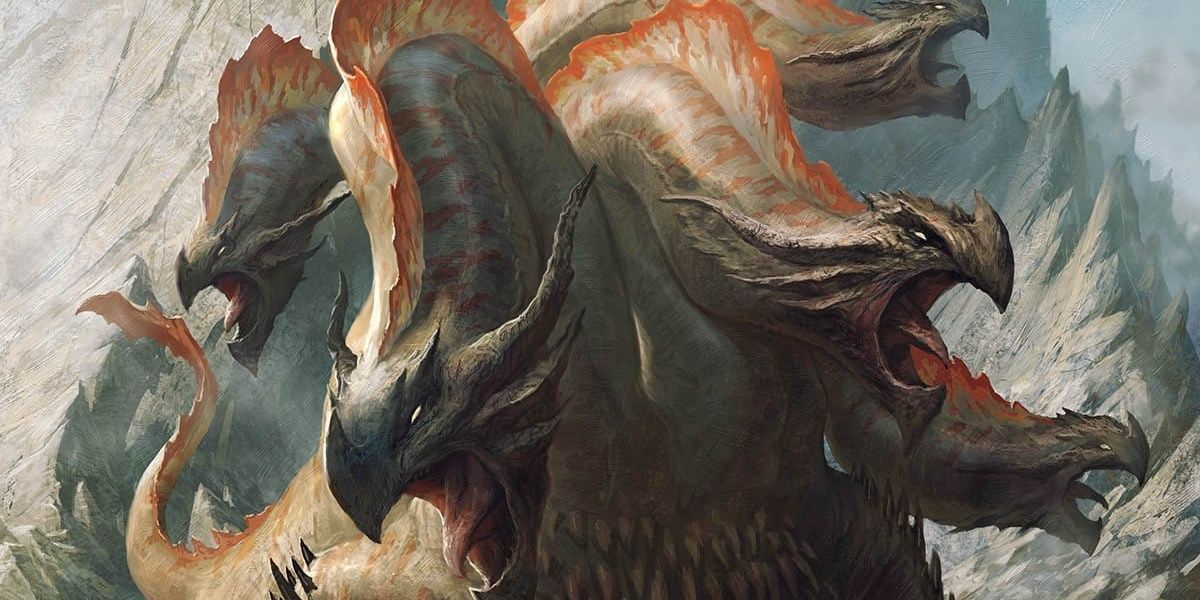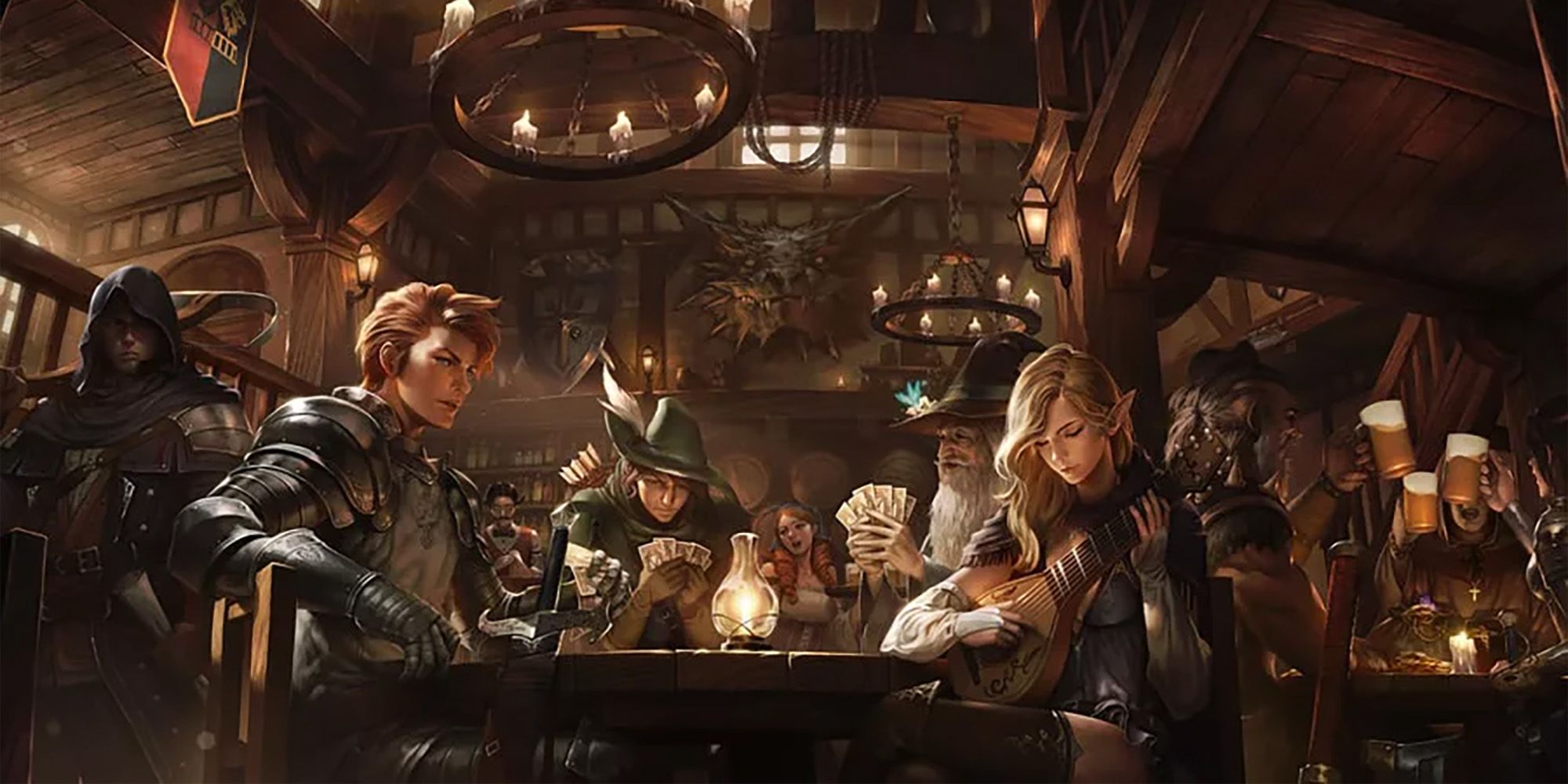Dungeons & Dragons has seen a massive explosion in popularity in recent years, be it through actual play shows like Critical Role or the series having its most iconic monsters depicted in Stranger Things. With this skyrocketing popularity, there are more new Dungeon Masters preparing for their first campaign than ever before, and for those looking to bring an element of horror into their games, a homebrew monster from Goblin Punch called the false hydra can't be beat.
As the name suggests, a false hydra is a multi-headed monster that seeks to devour everything around it. What makes a false hydra stand out from other hydras -- and what makes it so effective as a horror monster -- is the way it hunts for prey. A false hydra is capable of singing a song that causes any who hear it to forget that it exists, allowing the creature to constantly stay just out of sight and out of mind. Additionally, anything eaten by a false hydra is forgotten about, with even former loved ones continuing on as if the victim never existed. These two abilities combine to make something truly horrifying -- as long as the DM is prepared to use them.
How To Set Up a False Hydra
When planning on using a false hydra, DMs should always make sure to prepare in advance. A false hydra is first and foremost a narrative experience, so making sure the creature doesn't seem to come out of nowhere is vital. DMs should look for ways to subtly introduce elements that hint at forgotten figures related to the party by introducing odd objects or elements that only begin to make sense when the party releases they've all forgotten about a helpful NPC or character. A lone sending stone in particular can be extremely effective, as players may wonder where the paired stone is, only to discover it belonged to a forgotten ally eaten by the false hydra.
Hints towards a false hydra should be almost unnoticeable until the nature of what players are up against starts to become clear. Other effective methods include having outsiders to the false hydra's lair comment on the lack of people moving into or out of the area, or how many seem to not quite remember how many people live there. Overpreparation is a good thing when working with a false hydra, and DMs who want to take on the challenge should make sure to have things planned for when their players eventually take on the threat.
Beginning a False Hydra Encounter
With a false hydra's ability to be forgotten and make others forget it, an encounter with one will end up being much less action-packed than a boss fight against something from the Abyss. A village that's become a false hydra's lair should seem strangely empty, with plenty of well-kept houses but no one living in them. NPCs should come off as slightly paranoid, and there should be occasional outbursts from people or animals. These will serves as brief moments when someone spots the creature and reacts before forgetting about it. A common trick involves having the players rest at a tavern owned by a husband and wife, only to learn the next morning that there is only one owner who has never been married before.
DMs should also make effective use of music during this period, as the false hydra's ability to remain out of people's minds only works while it is singing. Stopping the music whenever it feeds on someone in the village can help let players know the effect is sound-based. If necessary, an NPC with their ears plugged who is screaming and pleading with other villagers to notice the monster could give players the kick they need if they still aren't recognizing what's going on. If up to the task, DMs can also introduce a sudden extra set of equipment with the party, revealing to the players that they had another adventuring partner the whole time, but have forgotten they existed after they were eaten by the false hydra.
The Fight & Aftermath of a False Hydra
Due to the psychological nature of a false hydra being its primary selling point, physical stats for the creature are varied and can change depending on how difficult a DM wants to make the battle. What's more important is giving players the chance to understand and effectively fight the creature by providing old texts that describe a memory-eating monster or notes scribbled by someone as they peaced together just what happened to the town before the players even arrived. When finally facing off against the creature, DMs should provide players with enough tools to ensure they aren't forgetting why they're fighting every round.
The aftermath of a false hydra battle is where DMs can make fantastic use of the creature's strange abilities. When a false hydra dies, the memories of those it ate can return, suddenly causing hysteria and confusion as players and NPCs alike suddenly remember people they've forgotten. An effective use of the false hydra can dramatically shift the way characters see themselves and one another, elevating a campaign to even greater heights and moving other storylines forward. With how flexible Dungeons & Dragons rules are, DMs are free to tweak and change just how a false hydra will impact the game to best suit the players and style of the campaign. No matter what, a false hydra done right is an experience players won't forget.




